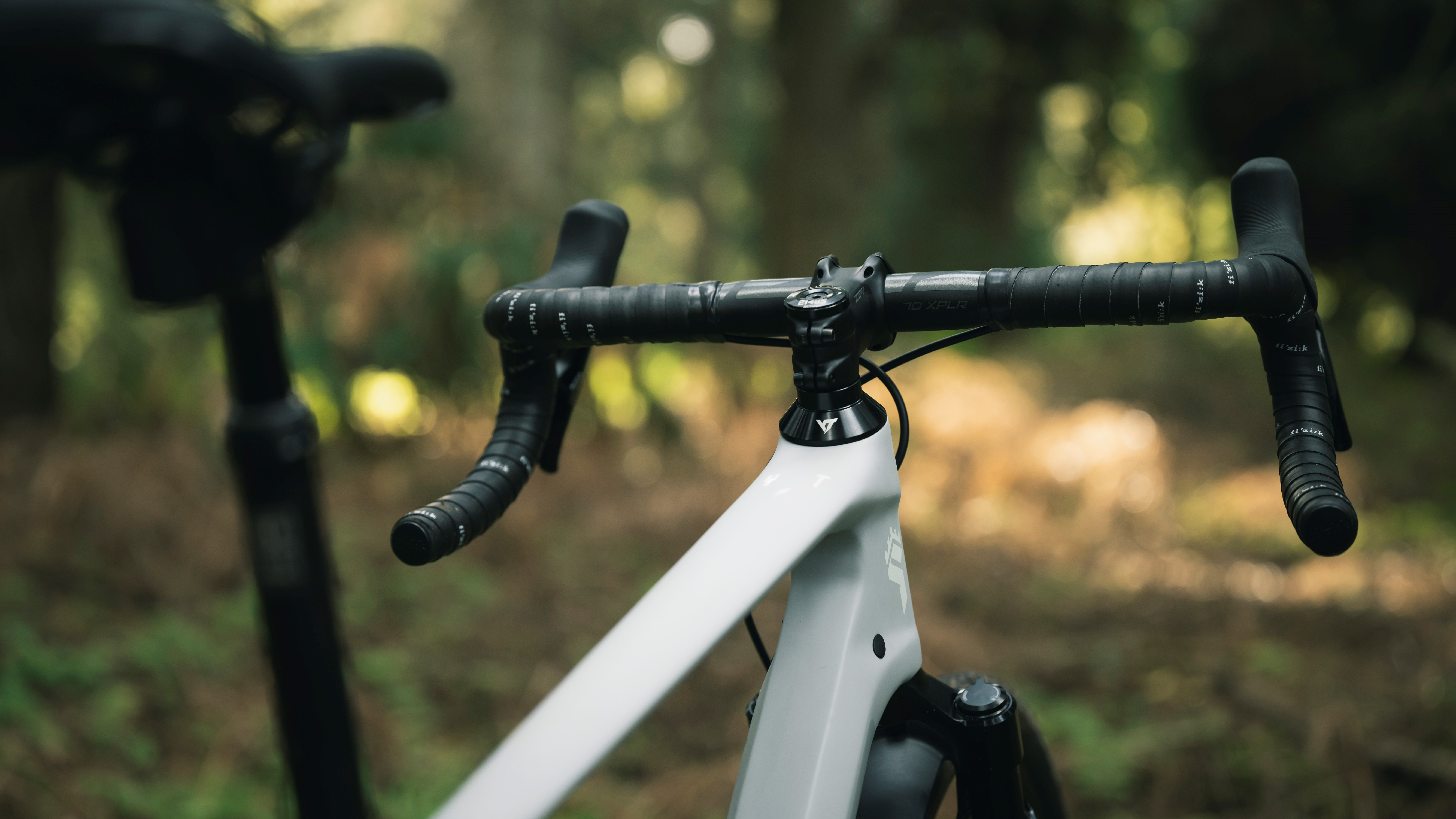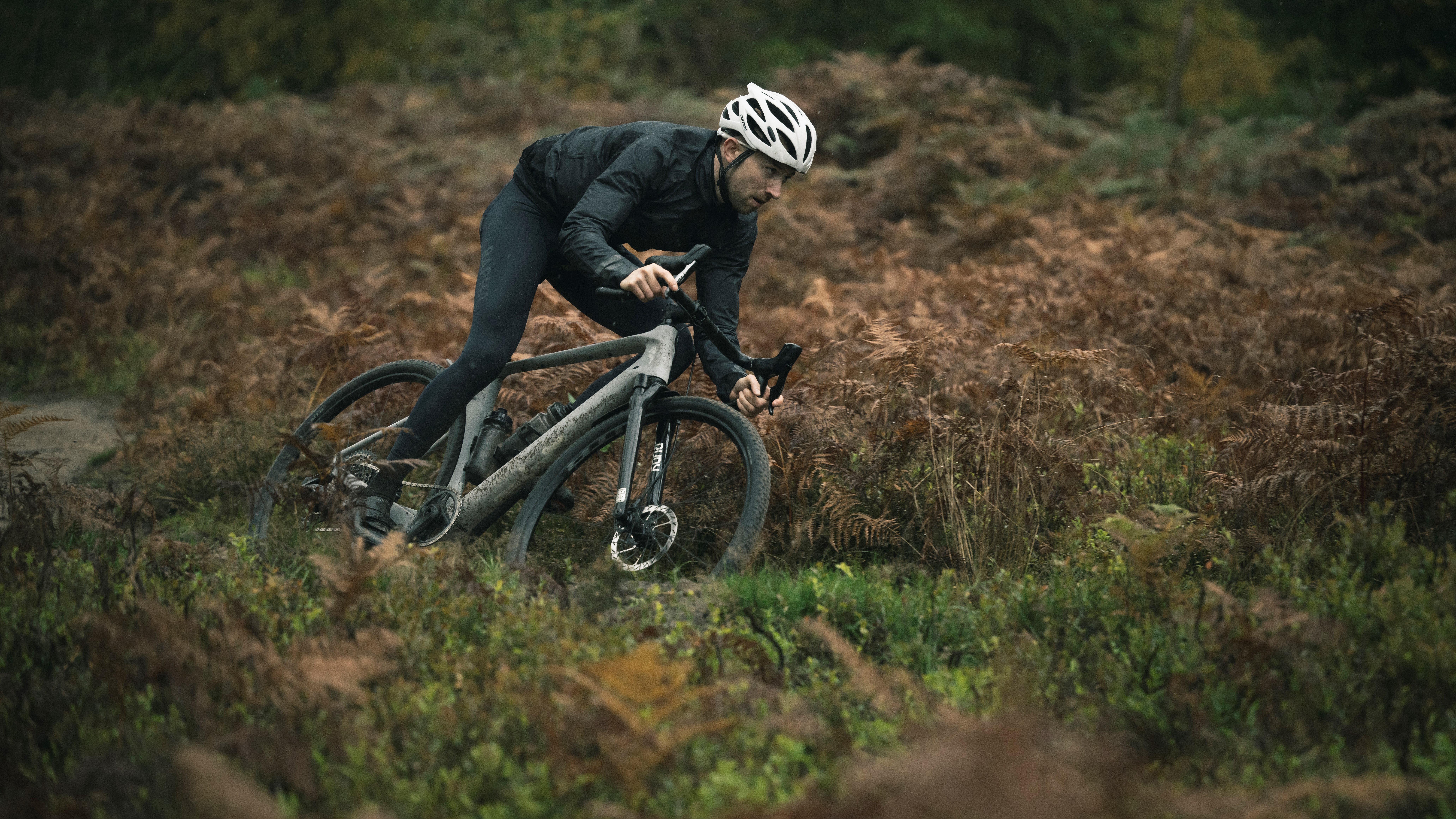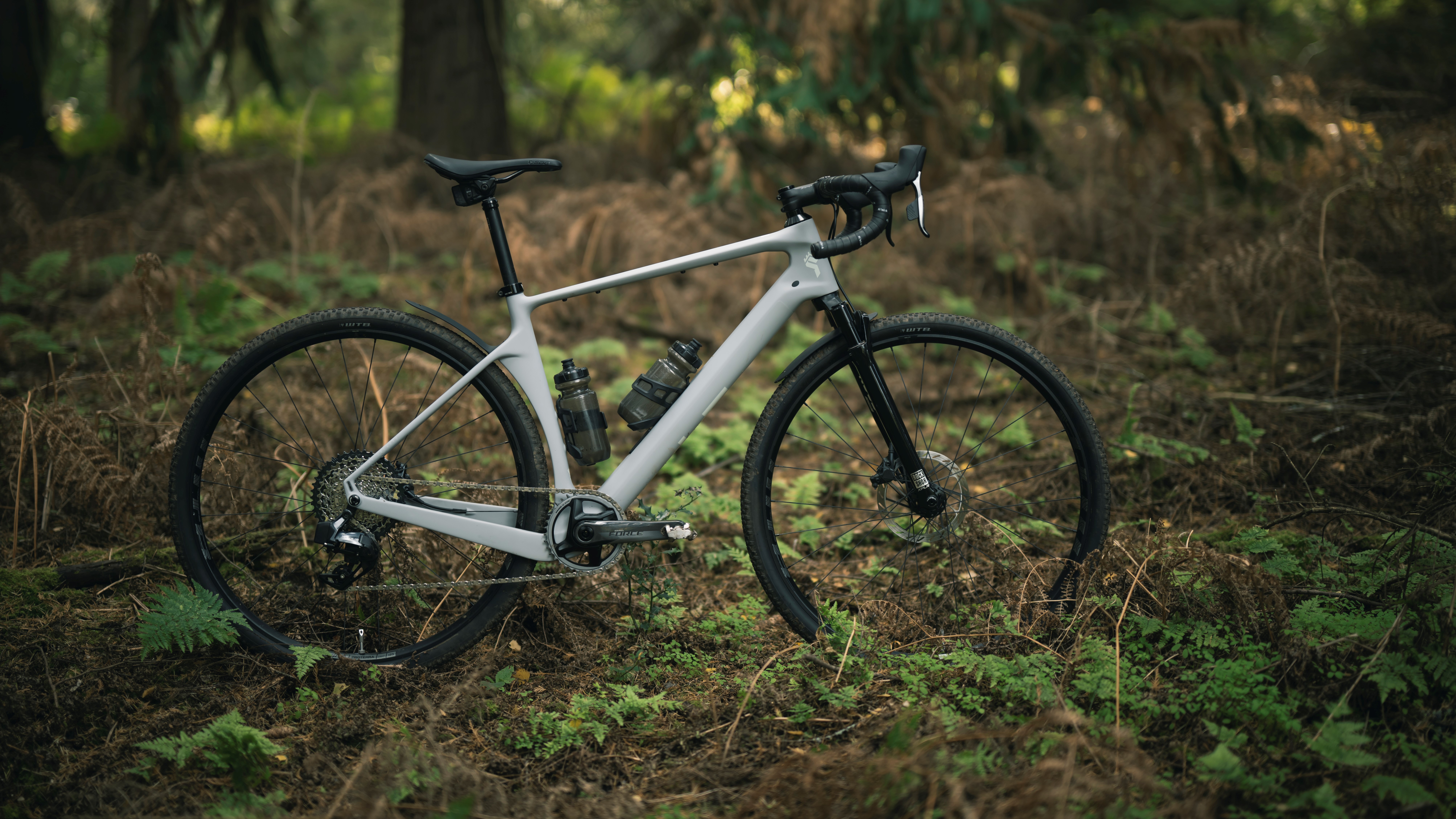Early Verdict
The YT Szepter rode very well across a range of terrain. If you want one bike to link gravel, tarmac and mtb trails and have a blast whilst you do it, this could be a great option
Pros
- +
Very capable across a range of terrain
- +
Comfortable riding position
- +
The inclusion of fork and dropper post inspire confidence
Cons
- -
Suspension fork and dropper post add additional servicing costs
- -
Some riders may want larger tyre clearances
You can trust Cyclingnews
Mountain bike brand YT industries, the brand most probably known to most out-and-out roadies as having the advert with Hollywood actor Christopher Walken advertising one of its bikes, has jumped into the gravel space with the release of a new gravel bike: The Szepter.
YT claims to have steadily noticed an increase over the last several years of more and more drop bar bikes appearing in the woods and figured with its gravity background and knowing what makes a fun bike when things head off-road, the time was right to drop into the gravel bike sector. The brand wouldn't be wrong on that score, with the gravel sector of the market exploding over the last several years. The best gravel bikes now cover a range of gravel riding, indeed there is a myriad of categories falling under the gravel banner now, from gravel race, touring, adventure etc. There is certainly a blurring of the lines here with lots of category overlap still commonplace. YT set out to create a bike that had its gravity DNA running through its veins (or fibres) and was first and foremost great fun to ride.

Design and Aesthetics
YT has chosen a High Modulus carbon fibre construction for the Szepter with the aim of striking a balance between stiffness and compliance. The need for a fun, gravity-influenced bike meant one thing was an absolute must for YT: A suspension fork, in this case a RockShox Rudy model. Geometry-wise YT has considered popular gravel bike geometry and decided on some numbers it thinks suit its target riding characteristics. The Szepter has a 69.4-degree head tube angle, which is slightly slacker than some other gravel bikes fitted with suspension forks off the peg, but not crazily so.
The head tube also has a specific carbon layup for extra strength with internal strengthening ribs and uses 1.5in headset bearings to fit the fork steerer. Reach has been increased to promote stability and stack raised compared to the average. The seat tube angle has been steepened to 74.3 degrees, which is designed to improve stability in the drops while maintaining snappy climbing and handling characteristics.
Visually the top-tier Core 4 model comes in a matte light grey colourway which I liked. Graphics and logos are minimal with a new head tube logo and white YT logo under the down tube The frame certainly looks like it could have some aero considerations included in the design, with dropped seatstays and a sculpted junction between seatstays and seat tube, but YT says aero has not been high up on the list of priorities for the Szepter, and any specific frame tube profiles are there to increase stiffness with specific extra layups in certain area.
The more slimline seatstays and top tube are designed to add flex and rider comfort. The beefed-up seat tube/stay cluster also aids the design and placement of the custom rear integrated mudguard that YT has designed for the bike, something it has also done for the fork. This does have the slight drawback of reducing mud clearance and adding to the overall frame weight however.
YT has also disregarded the notion of completely internally routed brake hoses just to tick a box which is a popular move currently. This would also dictate bar, stem and headset choice, citing serviceability and lower servicing costs to be more valuable to customers in the real world. This is a big tick in my book and for the type of riding the Szepter is designed for where muck and water from riding and washing will work their way into the headset and past bearing seals over time.
Elsewhere there are a pair of water bottle mounts in the usual places and you can make use of the YT-specific Fidlock and Thirstmaster bottle system or fit a cage of your choice. There are also four mounts under the top tube to help with on-bike storage should you want to fit frame bags etc.

Specifications
I spent some time riding the top-spec Szepter Core 4 model, which is a Sram-only affair and utilises the Sram XPLR series. Starting from the front, the bike is equipped with one of the best gravel suspension forks in the shape of a RockShox Rudy Ultimate XPLR fork in glossy black with 40mm of travel. The fork is equipped with a lockout switch so you can toggle this as and when you need the fork locking out. Groupset and braking are taken care of by the (deep breath) Sram Force ETAP AXS XPLR groupset, which is a 1 x 12 setup with 38t chainring and 10-44t cassette at the rear. However, the bike can be set up with a mechanical groupset should the need ever arise.
It also features a Sram DUB PF bottom bracket standard which should be a fairly low-hassle affair. The Force brakes use Sram HS2 disc rotors in 180mm at the front and 160mm at the rear, the inclusion of the Rudy fork means fitting a 180mm rotor at the front is possible for increased braking power.
Bars and stem are in keeping with the Sram package in the form of the Sram-owned Zipp service course SL which uses titanium hardware and the SL XPLR handlebar. The stem length is 70mm and the bars feature a short 70mm reach, bar widths increase in size from small to larger sizes and the size medium I rode had 440mm bars fitted which felt just right. These numbers promote handling and comfort well without going completely overboard in the trend for wide, flared gravel bars which coming from an MTB background, YT could have done.

The next product taken from the XPLR range is the Sram Reverb AXS dropper post which is a 27.2mm diameter with 50mm of travel. The dropper is actuated by hitting both shift paddles simultaneously and is a slick affair with multiple clicks on offer to fine-tune the drop, this is a world away from the feel of earlier reverbs. Air-only internals also provide a degree of additional compliance and cushion. Perched on top is an SDG Belair V3 overland saddle in 140mm width which is a custom option for YT.
Finally, wheels and tyres come in the shape of the WTB Proterra Light i23 wheelset and WTB Resolute tyres in a 42mm width, (the listed bike max is 45mm, though you could perhaps fit a slightly higher volume tyre in the front end due to the fork) The Resolute tyres feature a 120TPI casing and were set up tubeless with the impressive looking Peaty's tubeless valves and sealant.

Ride Performance
I got to ride the Szepter for a couple of days starting at the YT Mill, the brand’s UK base on the edge of the Surrey Hills. I've ridden plenty of cyclocross and mountain bike but this was my first time aboard a gravel bike with a suspension fork and I was eager to see how it would perform.
The average weight for size small Szepter comes in at 9.9kg so I'd guess my Medium bike was somewhere over 10kg. We covered a variety of well-chosen terrain over two days from regular tarmac roads including a useful 3km tarmac climb to bridleways, MTB trails, gravel sections, the odd small jump and drop off and deep sandy tracks reminiscent of a choice few cyclocross world cup tracks.
The Szepter felt stiff and climbed well on the road, spinning out of town on the second morning and straight into a 3km climb was a good chance to experiment with fork lockout and out-of-the-saddle climbing and accelerations and the bike certainly didn't feel laboured or slow. I suspect most road riders would probably baulk at the idea of riding a drop bar bike on the road with a suspension fork and I was keen to explore how it would feel. Accelerating at low speed prompted a fast response and I enjoyed riding up the climb rather than feeling I was on the wrong bike.
Off-road, I had a ball. The Szepter inspired confidence and its handling was even and balanced. It was stable on high-speed descents but, I suspect partly due to the seat tube angle, it allowed you to dart in and out of technical sections and make quick line alterations. A standout for me was the bar height and reach which seemed perfect for being able to just hook into the drops of the bars when tackling steeper descents or MTB trails, lower the dropper slightly and do my best to follow James from YT's lines.
We certainly covered ground I would normally bookmark as 'for a mountain bike' and the Szepter ate it up. I found myself grinning riding trails at speed and not once worrying about the bike, I feel this would have been different on a rigid bike and suspect I would have felt things a lot more in my arms, neck and hands after a while, reinforcing the case for including a suspension fork.
Equipment wise braking and shifting were perfect and I did my best at times to upset the AXS shifting and it didn't miss a beat. My only slight gripe was the Sram rubber shifter hood's willingness to come away from the shifter bodies at the top of the lever when wrenching up a steep climb or pulling on them hard to turn, although this may in part be down to my own hand placement.

Early Verdict
If YT's brief with the Szepter was first and foremost a bike to have fun on then I think they have hit the nail on the head. I had a lot of fun riding the Szepter across a variety of terrain.
The Szepter is a bike that will be brilliant if you're heading out for a blast and want or need to link up road sections, mtb trails and gravel. Which is the reality for a lot of riders who don't happen to live next door to a trail centre. The fork doesn't cause a hindrance on the road and if anything should just add more comfort but off-road will inspire confidence and allow you to access and ride more challenging terrain than you possibly have before and ride it faster.

Tom joined the Cyclingnews team in late 2022 as a tech writer. Despite having a degree in English Literature he has spent his entire working life in the cycling industry in one form or another. He has over 10 years of experience as a qualified mechanic, with the last five years before joining Cyclingnews being spent running an independent workshop. This means he is just as happy tinkering away in the garage as he is out on the road bike, and he isn’t afraid to pull a bike apart or get hands-on with it when testing to really see what it’s made of.
He has ridden and raced bikes from an early age up to a national level on the road and track, and has ridden and competed in most disciplines. He has a keen eye for pro-team tech and enjoys spotting new or interesting components in the wild. During his time at Cyclingnews, Tom has already interviewed some of the sport's biggest names including Mathieu van der Poel, Tadej Pogačar and Alberto Contador. He's also covered various launches from brands such as Pinarello, Ridley, Specialized and more, tackled the Roubaix Challenge sportive aboard his own rim-brake Cannondale SuperSix Evo, tested over 20 aero helmets in the wind tunnel, and has created helpful in-depth buying advice relating to countless categories from torque wrenches to winter clothing.
What is a hands on review?
'Hands on reviews' are a journalist's first impressions of a piece of kit based on spending some time with it. It may be just a few moments, or a few hours. The important thing is we have been able to play with it ourselves and can give you some sense of what it's like to use, even if it's only an embryonic view.
